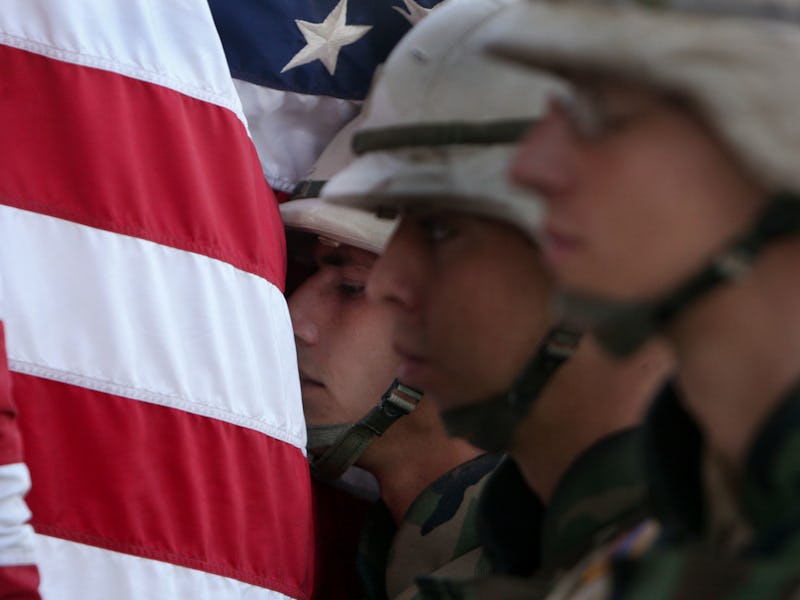The Explosive Reason the Military Uses Fireworks for Bomb Training
The Grucci family has mimiced atomic bombs and booby traps since the 1950s.

In the late 1950s, at the height of the Cold War, the United States Department of Defense was working on the next version of the atomic bomb, a fact they shared with New York-based fireworks-maker Felix Grucci, Sr.
They wanted Grucci to make firework that would sound like an atomic bomb, and be as loud as one, and produce the mushroom cloud that looked like one created by an atomic bomb blast.
“It was intended to give a loud bang followed by a large mushroom cloud — to get troops ready for the after effects of a bomb,” Phil Grucci, Felix’s son and current president of Grucci Inc., tells Inverse. Troops saw a mushroom cloud mimic lifting smoke and dirt hundreds of feet into the air.
The fireworks-simulated mushroom cloud was considered a safer experiment that also reliably duplicated the atomic bomb’s blast, so when the military test-dropped the device on Long Island, nearby residents didn’t need to worry about the nuclear fall-out pummeling their bodies with radiated particles.
Since then, the Gruccis have simulated millions of thunderous bangs and blasts for the Department of Defense, in the form of simulated hand grenades, booby traps, and mortar shells. They’re best-known for their pyrotechnics displays, holding the Guinness World Record for the “Largest Fireworks Display” ever recorded and “Largest Pyrotechnic Image.”
But when it’s not Independence Day or New Year’s, the Grucci team is experimenting with explosions to prepare American troops for warfare.
A mushroom cloud simulation on Long Island, New York, in the late 1950s.
The Grucci family has been creating pyrotechnics since the 1850s, when Phil Grucci’s great-grandfather, Angelo Lanzetta, lit firework fuses in Italy using a smoldering cigar. A century-and-half of innovation and experiencing — which has included blasting fireworks off of the Brooklyn Bridge, the Las Vegas Bellagio, and Dubai’s 2,717-foot tall Burj Khalifa — has provided the Gruccis the blasting wisdom they need to mimic the sights and sounds of modern warfare. Grucci’s simulations produce the decibel levels of actual bombs, and the smoky after-effects look and feel like a real detonation.
“We’ve taken the technology of what we’ve learned in pyrotechnics and making loud bangs, flashes, and smoke to create a safe mechanism for the troops to train with,” explains Grucci. A common example is the use of simulated grenades — so troops aren’t practicing with deadly hand-held bombs.
Felix Grucci Sr. showing a U.S. troop a bomb simulation.
Demand is high for the company’s military pyrotechnics. It produces hundreds of thousands of simulations each month at their facility at the Radford Army Ammunition Plant in Radford, Virginia, because simulated explosions aren’t just immeasurably safer for troops who don’t need to worry about deadly pieces of shrapnel flying across their training grounds, but it’s also significantly cheaper to build a fake bomb. The specific ingredients and chemistry involved is the Grucci’s proprietary information, but much of it based off of entertainment related explosions.
“To be candid, it’s not as expensive as using live ammunition,” says Grucci. And because it’s cheaper, the military can afford to provide more frequent training for its troops, whether they’re practicing the art of grenade throwing or experiencing the terror of setting off a booby trap.
This Independence Day season, Grucci Inc. will be setting off fireworks at 80 different sites to celebrate the occasions, but they also play a role in preserving it.
“It’s an honor to create and build things that defend our independence,” says Grucci.